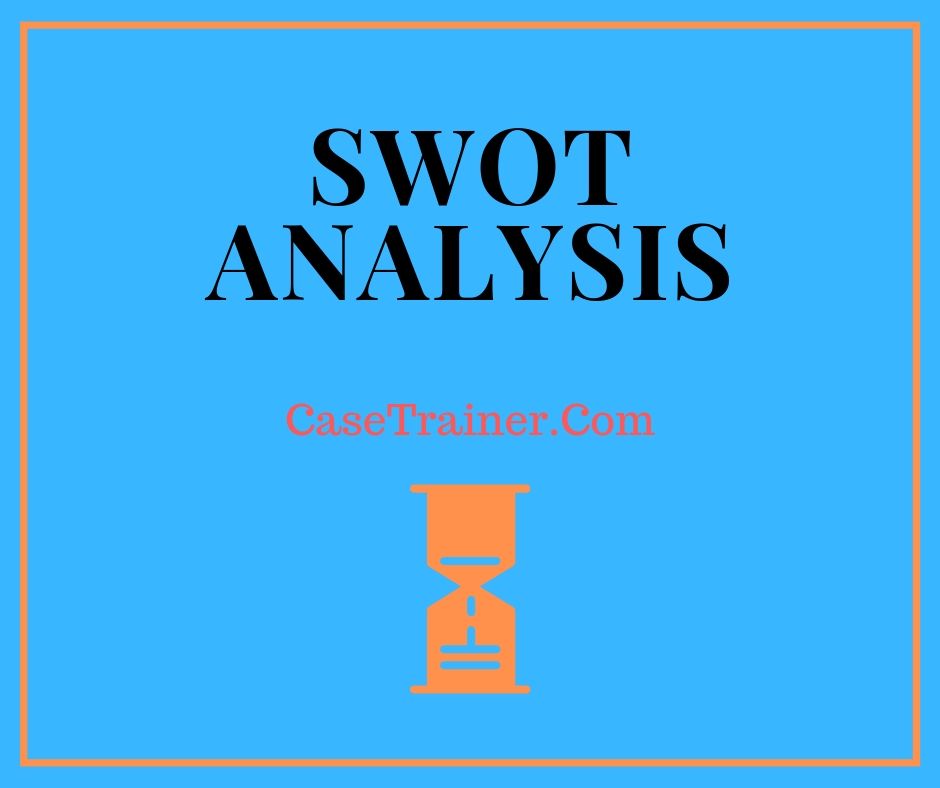Lean Implementation At Siemens Kalwa Plant 3 Case Study Solution and Analysis
Introduction
Lean Implementation At Siemens Kalwa Plant 3 Case Study Analysis is the largest publishing business with a greatest market share in the China's book retail market. CMP has actually ended up being a specialized information company and a big extensive Science and Technology publishing company through the combination of print media, audio-visual media and the network media.
Critical Concerns
Although, Lean Implementation At Siemens Kalwa Plant 3 Case Study Help has actually invested its 60 years journey efficiently, being a successful publishing house, nevertheless, the altering macro market trends and forces bring certain difficulties to the publishing industry in basic and CMP in specific. These elements consist of;
• Entryway of the brand-new publishing companies in the industry.
• Declining growth of the publishing market.
• Market saturation.
• Introduction of digital publishing techniques
• Enhancement of science and innovation.

The transformation of the macro markets have raised a number of concerns to the management at CPM that what could be the future of CMP in this situation? Do the long valuable experience, technical resources and the capabilities of the company could be used to strive for the future development unceasingly? How could the company sustain its long term competitive position in future?
Situational Analysis
Internal Analysis
SWOT Analysis
Strengths
Lean Implementation At Siemens Kalwa Plant 3 Case Study Help has specific strengths that can be made use of to minimize the threats, conquer the weakness and get the opportunities. Strengths of CMP are offered as follows;
• The long term experience of Lean Implementation At Siemens Kalwa Plant 3 Case Study Help in the publishing market i.e. 60 years enables the company to provide high quality items at a lower expense utilizing its prior experiences.
• The technical resources and abilities created by its successful journey provide a competitive advantage to CMP.
• Huge item portfolioof CMP helps it to diversify its danger and offer high value to its consumers.
• Strong monetary position permits the company to think about several advancement opportunities without any worry of raising fund externally.
Weaknesses
Along with the strengths, the business has particular weak points which could increase restrictions for the company in executing its development program. The weak points of Lean Implementation At Siemens Kalwa Plant 3 Case Study Solution are offered as follows;
• Despite of being a science and technology publishing company, the business still has standard ways ofpublishing which are not suitable with the growing technological shift.
• CMP extremely relies over the Chinese markets for its development. It should propose specific expansion strategies to prevent its dependence over the Chinese markets to accomplish long term growth.

Opportunities
The growth of the publishing market is decreasing since 2008, impacting Lean Implementation At Siemens Kalwa Plant 3 Case Study Help as well, however the development could be revived by availing certain chances presented in the market. The market chances for CMP include;
• The company could also introduce Digital Publishing by using its long term technical experience and a strong customer recognition in the market.
• CMP might think about an advancement program through the expansion towards foreign markets in order to decrease its reliance over Chinese markets by using its vast financial resources.
Hazards
The altering macro trends in the market and increasing competitors in the publishing market has presented specific dangers to Lean Implementation At Siemens Kalwa Plant 3 Case Study Solution consisting of;( Gurel, 2017).
• Introduction of digital publishing i.e. virtual libraries might lead to declining market share of Lean Implementation At Siemens Kalwa Plant 3 Case Study Solution due to the consumer shift towards digital libraries.
• The presence of large number of rivals in the publishing industry increase the risk for CMP to lose its competitive position in the market, as rivals can gain a strong consumer base by utilizing certain strategies like aggressive promo, quality products, and so on
• Entryway of brand-new publishing firms in the market together with presence of high competition increases the hazard of losing the consumer base.
Monetary Analysis.

Due to absence of information, the financial ratios of CMP could not be calculated. It might be analyzed from the Appendix III that the annual overall revenues of Lean Implementation At Siemens Kalwa Plant 3 Case Study Help throughout the duration 2000-2012 are growing at a high development rate, showing that the yearly need of the items of CMP is growing and the business is rather efficient in drawing in a big number of clients at a potential cost.
Along with it, the 2nd chart which shows the annual growth in the Lean Implementation At Siemens Kalwa Plant 3 Case Study Help total properties, shows that the company is quite effective in adding value to its assets through its incomes. The development in assets reveals that the total value of the company is likewise increasing with increasing the overall earnings. (Unidentified, 2013).
Another financial analysis of the business utilizing the provided data could be the analysis relating to the distribution of total incomes of the business. Huge part of the profits of CMP comes from the sales of its published books i.e. 64% as displayed in the Case Appendix V. The company might move towards other service sections with a possible development to attain its future advancement objective.
PESTEL Analysis
PESTEL analysis might be conducted to discover the various external forces affecting the performance of the business and the current patterns in the external environment of the business. A short PESTEL analysis of the business is provided as follows; (Alanzi, 2018).
Political.
As the publishing sector could have a significant influence on the frame of mind of the people about the communist ideology of the government, therefore, the publishing sector is extremely monitored and guided by the Publicity Department of the Communist Party of China. It might be said that the total political forces affecting CMP service are high. The federal government policies concerning the publishing sector are also increasing with the passage of time.
Affordable.
Economic forces impacting the publishing sector in basic and the Lean Implementation At Siemens Kalwa Plant 3 Case Study Help in specific includesthe costs of paper, the earnings level of consumers, the inflation rate, and the total GDP growth of the country. All these forces combine impact the demand for the publishing market. Along with it, the economic policies connected to the import of books impact the general service at CPM. China's financial conditions are quite beneficial for CMP with high GDP development and customer earnings level.
Social and Demographical.
The customer preferences are moving towards digital publishing rather than the traditional was of publishing. In this regard, CMP needs to focus on digital publishing to fulfill the altering consumer choices.
Technological.
Technological forces impacting the CMP include the technological development in the reading methods and so on. Improvement of science and technology in addition to the increase of digital publishing could minimize the demand for the CMP products, if specific actions would not be taken quickly.
Environmental.

Environmental forces impacting Lean Implementation At Siemens Kalwa Plant 3 Case Study Analysis includes the issues of ecological neighborhoods over the usage of paper in publishing books. The paper used in the books while publishing is needed to be disposable and the ink used while publishing should not be harmful for the environment.
Legal.
Legal guidelines for the publishing sector at whole are high. The legal policies relating to the publishing sector is managed by the General Administration of Press and Publication. Publishing Ordinance 1997 requires the publishers to be authorized first by the Government to be gone into in the publishing market. The ordinance forbids direct participation of foreign entities and people in the publishing sector.
Market Analysis (Porter's 5 Forces Model).
Porter's 5 Forces Design might be utilized to examine the beauty of the publishing industry China. A brief analysis of the Porter's Five Forces is given as follows;.
Hazard of New Entrants.
Dangers of brand-new entrants in the Chinese Publishing Market is moderate. The possible growth in the market tends to attract new entrants to the publishing market. The existence of intense competition and the requirement of substantial capital tends to demotivate brand-new entrants to enter in the market.
Risk of Substitution.
Threat of Replacement is high for the Chinese Publishing Industry. The alternative products for the released documents is the documents presented in the digital libraries on certain websites. The changing customer preferences towards digital knowing increase the danger of replacement for the industry.
Competitive Competition.
Competitive rivalry in the publishing industry is high. The presence of large number of consumers in the Chinese Publishing Market like CIP, PTP and so on tends to produce high competitive competition for CMP. Along with it, new entrants are likewise participating in the marketplace increasing the competitors for CMP.
Bargaining Power of Provider.
The major providers of the Lean Implementation At Siemens Kalwa Plant 3 Case Study Analysis consist of the providers of the paper for publishing files. As CMP is the largest publisher in the Chinese Publishing Market, therefore the total bargaining power of provider for CMP is low.
Bargaining Power of Purchaser.
Bargaining power of purchaser in the publishing industry is high. Due to the existence of a large number of publishers in the Chinese market and the market saturation, the purchasers requires high quality files at competitive costs.
Competitors Analysis.
CMP runs in an extremely competitive industry with the presence of a great deal of competitors. Nevertheless, the company has a competitive position in the market with the highest market share in the Chinese publishing market. Major rivals of Lean Implementation At Siemens Kalwa Plant 3 Case Study Solution consist of;.
• Chemical Market Press (CIP).
• Posts and telecommunication Press (PTP).
Chemical Market Press (CIP).
CIPis among the close rivals of CMP. Established in the same duration, CIP releases similar kind of books. For a large time period, CIP held the largest market share, and still ranks second and third in various market sections, with a major focus on academic publications. CIP functions as a risk for CMP as it could wean its market share due to its long term competitive background. CIP is concentrated on digital publishing and might wean the marketplace share of Lean Implementation At Siemens Kalwa Plant 3 Case Study Solution quickly in the current market circumstance.
Posts and telecommunication Press (PTP).
Another close rival of CMP is PTP. It was also established in the exact same period as CMP and CIP. It ranks sixth in the state-owned publishers in regards to service scale. It is also among the popular players in the publishing industry with a yearly total profits of RMB 550 million in 2010.
Alternatives
Alternative-1: Broaden towards New Markets
Pros
• Decreasing dependence over the Chinese markets.
• Increasing number of Consumers
• Growth chances.
• Avoiding the impact of market saturation in the Chinese publishing market.
Cons

• Use of prospective resources in expansion.
• Danger of failure in brand-new markets.
• Time consuming.
Alernative-2: Present Digital Publishing
Pros
• Sustaining customer base.
• Approaching new markets.
• Easy to introduce utilizing existing abilities.
• Low danger of Failure.
• Low requirement for funds.
• Increased item portfolio supplies high value to clients.
Cons
• Competition in the market by CIP, who has prior focus on the digital publishing.
• Shift of focus from the core company segments to the new one can lead the company to lose need of its products in the market.
Recommendations
As the preferences are moving towards digital publishing and the business need an instant solution to avoid the decreasing industry development. The company might also think about the expansion program after the success of its digital publishing program.
Execution
In order to present digital publishing in its item portfolio, the company must first gathers the data associated with the consumer need, the potential markets, the government guidelines and the data associated with the competitors presented in the market. After that, the business ought to choose one prospective section for its initial offering. It needs to collect research study that how it might differentiate its digital publishing from the existing competitors' items. After all the steps above the business need to choose the initial offering. The company must go for the other markets if the initial offering proves a success. In this way the business would be able to implement its digital publishing program.
Conclusion
Although, the development of the publishing market is declining because 2008, showing a hazard to the company's long term existence, but the situation can be controlled by considering an advancement plan in the future. The business could think about presenting digital publishingin its existing market to implement its development program at instant basis and to prevent the danger of failure for entryway in the brand-new markets.

